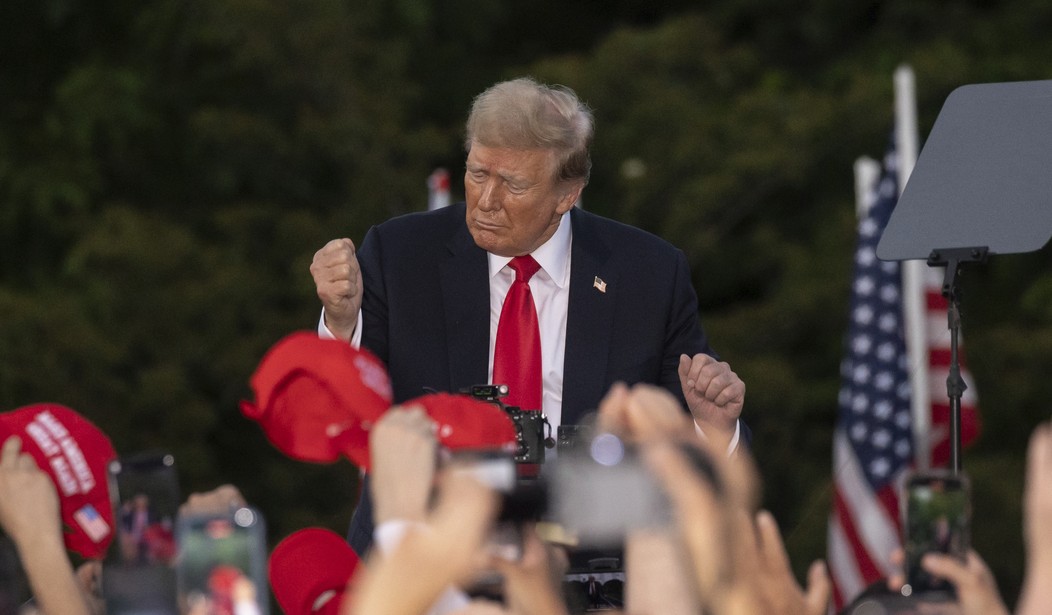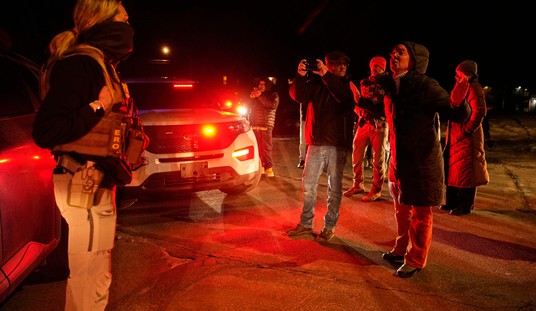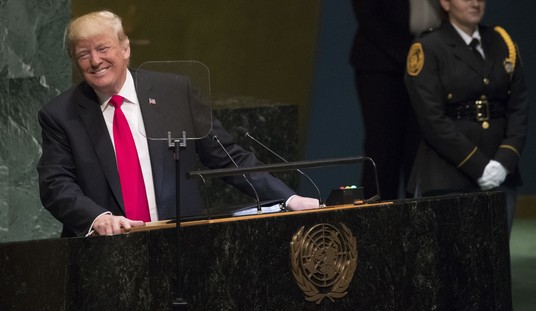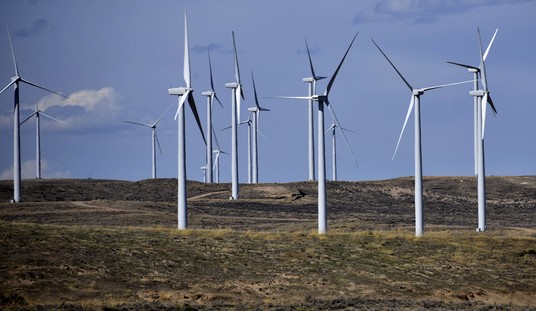There’s a reason why FiveThirtyEight’s Nate Silver wanted Joe Biden to consider quitting the 2024 race. The president’s polls were abysmal, and this wasn’t 2020, though some people in Biden’s orbit think they will win anyway because Trump is the presumptive Republican nominee. On crucial issues, Biden is underwater by double-digits, with most of his 2020 supporters admitting they think he’s too old to be effective. That’s on top of the 86 percent from a Washington Post/ABC News poll who think he’s too old to run again. These aren’t outliers; it’s a consensus. It also didn’t help that Biden looked utterly lost during the G7 Summit in Italy.
The European press noted the president’s mental decline. As we approach the period where the campaign kicks into high gear, starting with a crucial debate on Thursday, Silver has a projection. It’s not good for the president. As Silver noted, as of now, this race is no longer a toss-up. Trump has a 66 percent chance of winning the 2024 election:
Nate Silver's first forecast of this election season gives Donald Trump a 66% chance of winning at the moment.https://t.co/kMOSPZSDRO pic.twitter.com/Zf2674lqx8
— Jesse Singal (@jessesingal) June 26, 2024
Now, to get into the details, Silver has a lengthy post on his Substack where he speaks at length about polling, accuracy, and its mechanisms that, in many paragraphs, can be summed up like this: he’s not a God, his polls can be wrong, he won’t coddle either side if things change, and things look terrible for Biden. Liberals note and have pointed out that Silver is rather cagey about revealing the inner workings of his models. Regardless, if you’re a Democrat, this lengthy post is nightmare fuel since there isn’t much to take away regarding Biden winning this race other than he can, theoretically, turn things around. Silver even torched the Biden campaign’s narrative of the economy being robust—it’s decidedly not.
Also, for those grasping at the hope that a volatile election could make for a Biden comeback, a rematch between two candidates from a previous election reduces that risk, and the levels of partisanship also provide stability in the models. The only factor that could shake things up is how RFK Jr. will do in the states where he’s on the ballot. Based on a preliminary CNN analysis, Kennedy takes more support away from Biden than Trump, especially among black voters. Silver was quite adamant: thus far, the 2024 race is stable, and given the polls now, that should give Biden’s staff agita:
Recommended
The model gives Trump a 66 percent chance of winning the Electoral College, and Biden a 34 percent chance. There’s also a small chance that no candidate gets an Electoral College majority — either because there’s a 269-269 tie or because RFK wins some electoral votes somewhere — though those cases will probably resolve to Trump because of the likely Republican advantage in congressional delegations in the U.S. House under the 12th Amendment.
There’s also one other important component of the model that I haven’t talked about yet. Specifically, it’s the model’s uncertainty index, our estimate of the overall amount of error in the system, especially how much the polls might drift between now and Election Day.8
The model expects that drift to be pretty low. The uncertainty index now accounts for nine variables — up from eight last year — and most of them have relatively low readings:
- The polls have been extremely stable so far, which tends to predict future stability.
- We’re in a time of very high polarization, which tends to produce more stable races.
- Not just one but both candidates were on the ballot last time; repeat candidates tend to produce less volatility in the polls than first-time ones since they are better known by voters. (This is the factor we newly account for this year.)
- The economy has been relatively steady, so there isn’t a lot of uncertainty about sudden changes of course.
- There’s a relatively high volume of polling — if slightly less than last cycle — so we’re not lacking for information about the state of the race.
- As discussed above, there actually isn’t that much of a gap between polls and fundamentals — although there is some.
- Finally, there also hasn’t been that much news — news outlets have resorted to running stories about shark attacks — as measured by the number of full-width New York Times headlines.
[…]
And speaking of a systematic polling error — the model actually makes pretty conservative assumptions about that. Its estimates of Election Day polling accuracy are calibrated based on elections dating all the way back to 1936, which includes some stinkers such as Dewey (not) defeating Truman. This makes the error it expects about 35 percent higher than if we’d trained it only on more recent polling. So if we’re in some state of secular decline from what I think of as the Golden Age of Polling — polls had a series of really good years from roughly 2004 to 2012 — the model is not only prepared for that but expects that.
People sometimes ask me, if I meet them for a beer or something, what I really think about the election — as though I have some private mental model that’s separate from my statistical model. It’s not an entirely crazy question. Sometimes there are things that I think a model I built is doing wrong but haven’t gotten around to fixing10 — or there might be an edge case that is just hard to model.
[…]
If we reach a point where my mental model and the Silver Bulletin model diverge, I’ll tell you that. But right now they don’t diverge at all. This forecast, with Trump having a 66 percent chance of winning, is literally the forecast that I’m advising people to trust.
[…]
There is still time for Biden to turn things around — the debate tomorrow night provides one such opportunity, obviously. Biden could also change his strategy, change his staff, or even pull the emergency lever and decide that stepping back and giving someone else the nomination — either Kamala Harris or someone chosen at the convention — could give Democrats better odds. (Disclaimer: that also might be a terrible idea13.)
And he’s really not that far behind. But the race isn’t a toss-up. That's at best a white lie — a convenient fiction that allows everyone to shirk accountability for their forecasts and their decisions.
Silver also added something that Real Clear Politics’ Sean Trende noted: Maybe everyone is being too “bearish” on Trump.
“As I’ve done a few more presentations and panels, my self-questioning has only become more intense; there was very little pushback from more liberal participants on my analysis, or on the conclusion that this race was a tossup,” wrote Trende, who, upon further dwelling wondered what good news is there for Biden, and would he be labeling the 2024 race a toss-up if it were any other candidate pairing.
The lack of pushback from liberals now, which has been replaced by anxiety and fear of a Trump return, seems to confirm that liberal America is aware that Biden can lose, something the president’s staff isn’t accepting. Silver added that the reasons for Trump winning have only become more “robust” in the past few weeks and months.
I also agree that Biden can win again, but does he have the energy, mental capacity, and political skill to do so? With Obama or Clinton, that’s without question; both men were adroit in connecting with voters, whereas Biden sniffs people’s hair along the picket line. His inner circle also leaves something to be desired, too. There’s no James Carville-like operative working with Joe, but this is who Democrats opted to stick with, even though his lack of depth in this job could be exposed brutally on Thursday if Trump plays his cards right.

























Join the conversation as a VIP Member